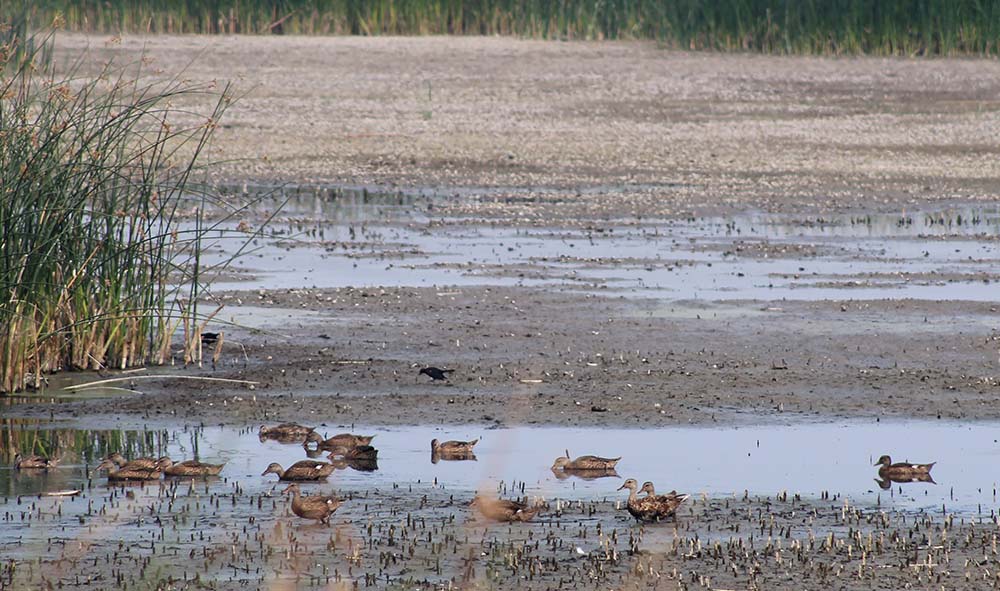
Aug 11, 2020
California Waterfowl creates task force to fight for water-starved Lower Klamath NWR
FOR IMMEDIATE RELEASE
California Waterfowl has combined forces with key volunteers to create a Lower Klamath Refuge Task Force. Its mandate is to secure water rights for the embattled Lower Klamath National Wildlife Refuge, and restore the refuge to its former greatness and vital role in the Pacific Flyway.
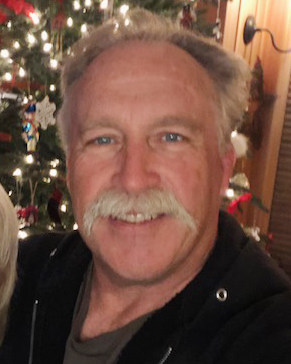
Task Force Chairman Rob Plath
“Lower Klamath, the beating heart of the Pacific Flyway, is in crisis,” said Task Force Chairman and California Waterfowl board member Rob Plath. “Restoring the refuge to its historic role while balancing stakeholder interests presents an enormous challenge. Our Task Force members, who have a combined 180 years of advocacy, conservation leadership and water law experience, are dedicated to making a significant long-term impact.
“Our success is dependent on the help and support of all who value wildlife,” he said. “A healthy Lower Klamath leads to a healthy Pacific Flyway.”
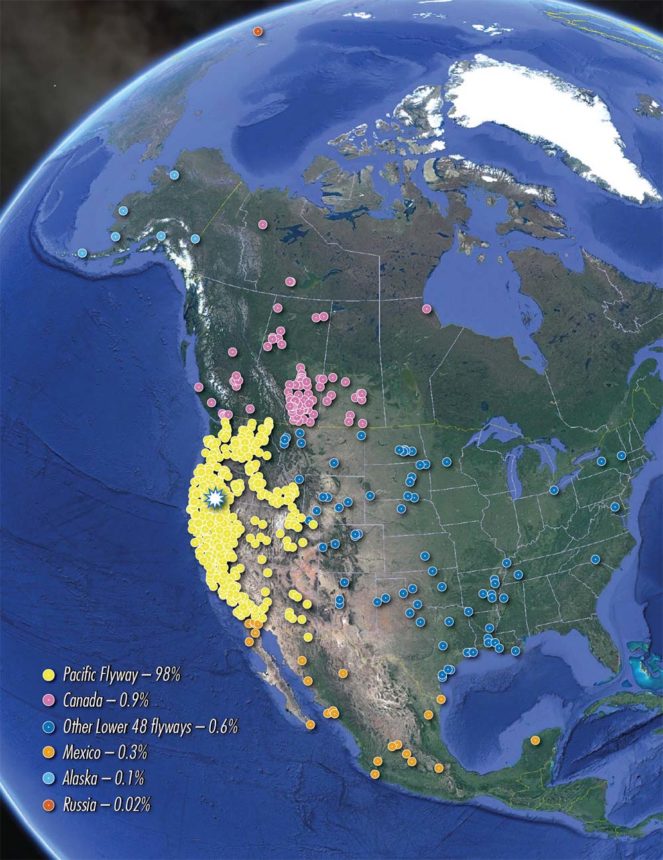
Birds throughout the Pacific Flyway use the Lower Klamath National Wildlife Refuge. These dots represent recovery locations from 1949 through 2019 of ducks and geese banded at LKNWR during brood-rearing and molt seasons. Click on the image to see detailed graphic. (DATA SOURCE: U.S.G.S. Bird Banding Laboratory).
LINCHPIN OF THE PACIFIC FLYWAY
Lower Klamath is the single most important staging area for waterfowl in all of North America. An estimated 80% of Pacific Flyway waterfowl, representing one-quarter of the continental population, depend on this region for fall and spring staging during their annual migrations.
The refuge also provides critical breeding, brood-rearing and molting habitat, but only when it has water. That means it serves as either a boost to, or bottleneck for, California’s breeding populations of mallards in particular, but also gadwall, cinnamon teal and redheads.
In 1905, the Lower Klamath Lake – a complex of lakes and marshes so vast that steamers plied its waters – was “reclaimed” and converted to farmland under the Klamath Reclamation Project. The refuge was formed in 1908, when planners recognized that the millions of waterfowl migrating in the Pacific Flyway needed somewhere to go. The refuge received water rights, but they were junior in priority to the Project’s water rights.
SEEDS OF THE CRISIS
The refuge's water crisis came to a head in the early 2000s when federal agencies re-prioritized Klamath River water for three endangered fish species: coho salmon, shortnose suckers and Lost River suckers. During this process, few voices other than California Waterfowl spoke up for waterfowl and the needs of the refuge.
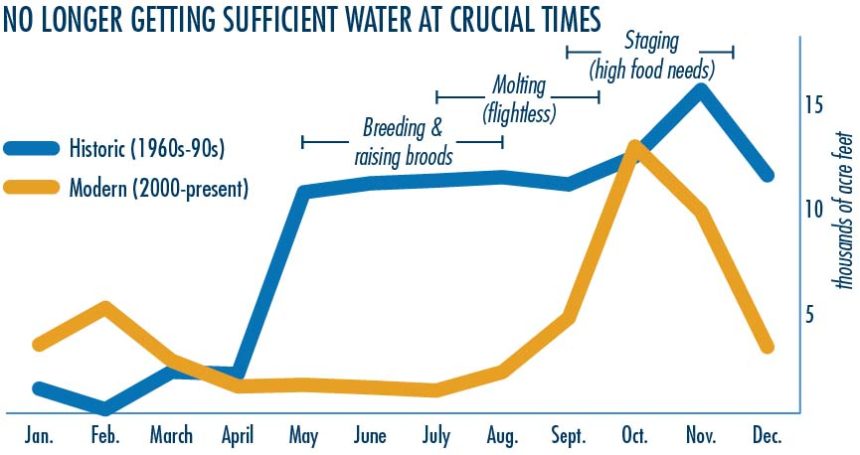
Bird populations at Lower Klamath have experienced an accelerated decline since the early 2000s. Due to extreme water shortages in 2018, fall duck populations at the refuge were among the lowest ever recorded for that time period. With the region in extreme drought, the situation for the refuge and its wildlife is truly dire.
Because Lower Klamath is a key breeding, brood-rearing and molting area, the population declines don’t affect just the refuge. California’s mallards have been hit particularly hard. The state’s breeding population of mallards, which produces 60% to 70% of the mallards that winter in California, has declined 57% since 1999, and a dry Lower Klamath is a key part of the problem.
Water shortages also exacerbate naturally occurring outbreaks of botulism at the refuge. The disease spreads more quickly when molting ducks, which can’t fly while they grow new flight feathers, are concentrated in smaller and smaller ponds. (Scroll down to see video, or click here to watch on YouTube.) The 2020 botulism outbreak has started early, fueled by unusually warm temperatures, and spread rapidly as water levels continued to drop.
The drastically reduced water supply is also negatively impacting wildlife-dependent recreational opportunities, chiefly hunting and wildlife viewing, that help fund conservation efforts.
All of these impacts will continue to accelerate unless immediate action is taken to restore the refuge’s water supply.
THE PATH FORWARD
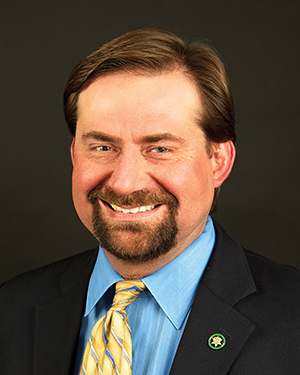 “California Waterfowl is thrilled to have the support of this task force, because it adds firepower to a fight we have waged for two decades, and we are running out of time to win this battle for the ducks,” said CWA President John Carlson, Jr. “The health of the Pacific Flyway and California's mallard population depends on a healthy Lower Klamath National Wildlife Refuge.”
“California Waterfowl is thrilled to have the support of this task force, because it adds firepower to a fight we have waged for two decades, and we are running out of time to win this battle for the ducks,” said CWA President John Carlson, Jr. “The health of the Pacific Flyway and California's mallard population depends on a healthy Lower Klamath National Wildlife Refuge.”
Members of the California Waterfowl Lower Klamath Refuge Task Force* are:
• Chairman Rob Plath, former chair and current member of CWA Board
• Secretary Yancey Forest-Knowles, former Chair of CWA Board
• Victor Gonella, former chair of CWA Board
• Rocque Merlo, former chair of CWA Board and current member of CWA Board
• Mike Hoppe, former member of CWA Board
• Chris Dobson, member of CWA Board
• Greg Dyer, member of CWA Board
• John Carlson, Jr., CWA President
• Mark Hennelly, CWA VP of Advocacy
• Ellen Wehr, General Counsel, Grassland Water District
• Karyn Stockdale, Western Water Initiative Senior Director, Audubon
• Special advisor: Congressman Doug LaMalfa
• Special advisor: Congressman Mike Thompson
*Updated 1-20-23
Please click here for more information about CWA’s efforts for Lower Klamath.
###


